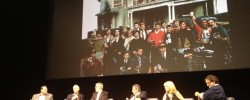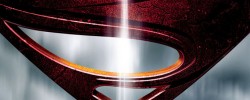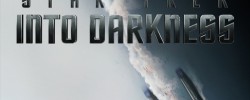
The Fast and the Closeted – How Hollywood’s most homoerotic franchise put it in neutral
Nothing says “never give up” like The Fast and the Furious series. It took 10 years and five films for the franchise to finally deliver a movie that was better than ‘ironically good’, and the rewards have been enormous; converting new fans, winning over critics and, most importantly, bringing the series to a combined box office of $1.5bn – more than a third of which was hauled in by Fast Five (2011) like a rampaging bank vault.
The franchise has an odd history, and much like the rebooted Star Trek series has had to evolve to keep up with audience tastes and expectations, similarly becoming far more action-based, less car porny.
But what’s really been lost along the way isn’t the vehicular fetishism or the street races, but the simmering man-love that set the first two Fast & Furious films apart from other contemporary big-budget action movies. The often unsubtle homoeroticism at the heart of The Fast and the Furious (2001) and the full-blown gay love affair that makes 2 Fast 2 Furious (2003) even remotely watchable were a franchise-defining element – whether audiences knew it or not – the loss of which nearly crashed the whole series. It wasn’t until the homoerotic vacuum left by 2006’s The Fast and the Furious: Tokyo Drift was filled with a renewed hyper-masculinity that Fast & Furious (2009) got things back on track, at least financially.
The Fast and the Furious finds its origins in a now forgotten magazine article, ‘Racer X’, published in Vibe in May 1998. Racer X is a tight, incisive piece of journalism, pouring light on the masculine street racers who were developing a fierce reputation on the streets of New York and New Jersey. But making a movie about suped-up Japanese cars and their not-so-struggling drivers was hardly going to work, especially when the inherently masculine subject matter seemed to hark back to a previous generation of action movie. At the time, the below extract from Racer X already seemed out of date if played completely straight:
“Few know that excitement like [street racer Rafael] Estevez. Six feet tall with stooped shoulders and a healthy gut, he writes his own rules. Forget about valor, compassion, honor; in his book, that’s all synonymous with second place.”
By 2001 Arnie, Stallone and Willis were (for the time being) all gone, Van Damme and Seagal were going direct to DVD and Jason Statham had yet to leave London. Vin Diesel had shown himself a far more restrained action successor with 1999’s Pitch Black, but his muscles and low decibel mumbling made him feel a relic of the previous decade before he had even begun. Pretty boy Paul Walker, on the other hand, was pure millennial leading man, tougher on the inside than the out, and dashingly blue-eyed and wavey-haired enough to keep interested the dates of male cinema-goers, mostly there for the cars and brain-cleansing plots.
But if we’ve learned anything from Torque (2004), The Fast and the Furious’ regrettable motorcycled cousin, it’s that pretty people, macho posturing and CGI-amplified speed-racing just won’t cut it. Whether people cared or noticed or not, what they loved about The Fast and the Furious was how secretly gay it all was.
The Fast and the Furious expands the Racer X idea with some Road Warrior-esque criminal escapades, an aside in the first film that has since become the lynchpin of the series. Dominic Toretto (Vin Diesel), a hardcore street racer with more daddy issues than you can fit into a season of LOST, moonlights as a convoy hijacker. His crew has a feud with an Asian gang, who they challenge at the worryingly titled street racing event ‘Race Wars’ – racial conflict would find its way to the heart of Tokyo Drift, but for the most part this whole series features Benetton levels of diversity.
 Enter Brian O’Conner (Walker), the worst named action hero in the history of the genre (he sounds like a history teacher). An undercover LAPD officer, he has enough car knowhow to convince Toretto to take him in as part of his racing crew, even if his nitrous oxide-powered car can’t keep up with that of the crew’s leader. The chemistry between the two is electric from the get-go; like all relationships it begins with gentle teasing, but it ends with the pair coming to more than your usual level of mutual respect.
Enter Brian O’Conner (Walker), the worst named action hero in the history of the genre (he sounds like a history teacher). An undercover LAPD officer, he has enough car knowhow to convince Toretto to take him in as part of his racing crew, even if his nitrous oxide-powered car can’t keep up with that of the crew’s leader. The chemistry between the two is electric from the get-go; like all relationships it begins with gentle teasing, but it ends with the pair coming to more than your usual level of mutual respect.
The filmmakers would have us believe that the central romantic subplot in The Fast and the Furious is Brian’s winning over Dominic’s sister Mia (the impossibly luminous Jordana Brewster), but all of the rules of filmic storytelling contradict this idea. The scene where Dom shows Brian his father’s car and bears his soul to him about his past and his life philosophy is by far the most intimate in the whole film, and probably the most intimate in the entire franchise! Even when the movie cries out for a sex scene between Brian and Mia, the film cuts to post-coital cuddles, as if saving him for Dom. Elsewhere Dom gets it on all grabby with his girlfriend Letty (Michelle Rodriguez), but the scene feels more like sexy padding for the trailer than a serious romantic scene. Will we ever see the Brian/Dom love scene these films cry out for?
Even when they talk about cars an aura of homoeroticism hangs in the air. Showing Brian his father’s Dodge Charger, Dom’s use of language is far more suggestive than you’d expect for a film aimed at young men who like things that are fast and make noises. “Nine-hundred horse of Detroit muscle,” he says. “It’s a beast.” Cars are usually referred to by fetishistic owners in the feminine, so the neuter case bends the language towards the homo-auto-erotic. Even the words used, ‘muscle’ and ‘beast’, are far more likely to describe male sexuality than female. Compare to Transformers: Dark of the Moon, where Patrick Dempsey describes the feminine curves and perfections of his classic motor while Michael Bay’s camera lovingly dry-humps Rosie Hungtington-Whiteley. Here the object of lust is similarly not the Dodge, but Diesel’s muscles, on full display for Walker.
Of course it’s not just the Dom-Brian-Mia love triangle that raises the gay bar here, Dom’s best friend Vince (Matt Schulze) throws his bearishness into the ring also. The script tells us his antagonism towards Brian is based on his affection for Mia, but the performances don’t quite back that up. When Vince first rumbles with Brian, two of his cronies jeer at the pretty boy: “Awh, he’s beautiful.” “I like his hair colour.” Threatening Brian off, Vince calls him a “faggot”, a stand-out moment of homophobia in the series that many might argue points to Vince’s own… insecurities. The scene suddenly descends into a very roll-around-on-the-ground brawl.
The pivotal scene of homoerotic lust and spurned lovers comes at a BBQ at the Toretto household, where Vince actually storms out from the party out of jealousy. When he returns, his first animalistic move is to mark his territory, by placing his arms on Dom’s shoulders and kissing his head. “He’s always hungry,” remarks Letty, bitterly aware that every man in the movie has a better claim to her boyfriend than she does. What follows is an unintentionally hilarious scene of awkward glances between the characters that would not feel out of place in a Twilight movie.
In the end, Brian’s cover is blown, and Dom ‘breaks up’ with him, but in a final act of love – because let’s face it, this is far beyond bromance at this point – Brian sets him free, sacrificing his own career and freedom for his ‘friend’, without any thought for the sexy sister who is losing both of them. Brokeback Mountain would not come out for another four years, so audiences weren’t ready for a mainstream gay love affair. They saw one, didn’t realise it, and it was so apparently awesome it recouped its costs five times over. A sequel was guaranteed, but could it achieve the same degree of homoeroticism by subterfuge?
If The Fast and the Furious is The Way We Were of racing movies, 2 Fast 2 Furious is its Carry On Driving. Whereas the original cruised around with its subtle glances and masculine metaphors, the sequel is a series of drive-by innuendos. Finding O’Conner on the run after setting his true love free, 2F2F follows his adventures in Miami, where he makes a living utilising his street racing skills. Caught by U.S. Customs, he is given the opportunity to clear his name (that old chestnut) in return for infiltrating a drug lord’s gang and bringing him to justice.
Brian’s contact within the drug lord’s cabal is Monica Fuentes (Eva Mendes), an undercover Customs agent/Latina sexpot. And yet, despite the two beautiful people at the heart of this movie, there is not even an attempt to couple them off. There’s no room for heterosexual tension in 2 Fast 2 Furious. Romantics could argue Brian is still devoted to Mia, but then why is she not even mentioned once in the whole film? Her brother is! No, Brian’s affections in this film are saved solely for his old friend Roman (Tyrese – coincidentally also the subject of a major Vibe magazine piece back in 1998 as an emerging R&B star). Roman has also had his run-ins with the law, and gets a similar deal to Brian for helping out with the main plot.
But whereas there was some genuine romantic chemistry between Toretto and O’Conner, Brian and Roman are just fooling around. This is bombastic gay flirting, and it is hilarious to observe. In one scene Roman warns Brian that women only ever bring them trouble. If that were the height of the double entendres, it might suffice. But the real treat comes during a scene where Brian and Roman must audition as traffickers for the villain, raiding an impound lot. Burning off years’ worth of antagonism and sexual frustration, Brian and Roman repeatedly show off to one another as they bomb down the freeway, delivering “banter” to one another. Here are some examples of the dialogue in this scene:
Brian: “Let’s see what this thing can do.”
Brian: “Come on, stick with me Roman, see what you’ve got.”
Roman: “Let’s see if you still got it, Brian.”
Brian: “Alright Roman, I got something for your ass.”
You get the idea. In case you didn’t, at one point Roman overtakes Brian and, as he drives past, flips him the finger. Which he then… slowly rotates. This is undoubtedly the moment where the Fast & Furious series crosses the line into full-on homosexual action parody, joining the ranks of homoerotic icons such as Top Gun and Showdown in Little Tokyo (“Just in case we get killed, I wanted to tell you, you have the biggest dick I’ve ever seen on a man.”). Like Top Gun, 2 Fast 2 Furious revels in the amount of sweat men produce in warm climates. A game of volleyball would have simply been too much here.
But while sliding its subversive gay agenda into a film targeted at young heterosexual males, 2F2F still finds time for the obligatory babes and bonnets scenes. However, while no doubt objectifying the bikini-clad babes of South Beach, the film matches its homoerotic overtones with surprisingly strong moments for female characters that serve to further emasculate the men. While Brian wins his first (ridiculous CGI) street race, second place is taken by female racer Suki (Devon Aoki), much to the apparent shame of the male runners up. In the finale, after Dukes of Hazarding their car onto the villain’s yacht, it is not our two alpha male heroes who apprehend the villain, but Monica. The Fast & Furious films have never shied away from suggestions that the girls can keep up with the boys, but this is the only film in the series to suggest that, if the boys are all too busy playing with each other, the girls will take the lead.
 But 2 Fast 2 Furious did not take the lead over The Fast and the Furious at the box office. The sequel, despite having twice the budget of the first film, had a smaller domestic gross, although it took considerably more outside the U.S. giving it the higher total and ensuring it was certainly not a failure. Still, with the franchise showing little sign of growth, a series overhaul was deemed necessary. This meant straightening things out. In more ways than one.
But 2 Fast 2 Furious did not take the lead over The Fast and the Furious at the box office. The sequel, despite having twice the budget of the first film, had a smaller domestic gross, although it took considerably more outside the U.S. giving it the higher total and ensuring it was certainly not a failure. Still, with the franchise showing little sign of growth, a series overhaul was deemed necessary. This meant straightening things out. In more ways than one.
More a reboot than a sequel, The Fast and the Furious: Tokyo Drift is the Season of the Witch of the Fast & Furious series. Loosely tied to the other films (by means we’ll get to), it concerns a car-obsessed American ne’er-do-well named Sean (Lucas Black) who gets Fresh Prince’d off to Tokyo to stay with his father. Here he falls in with thankfully Anglophonic immigrants who like street racing, particularly when it involves drifting. Now I know nothing about cars, so by my best understanding drifting is some kind of magic performed on wheels. Hope that clears that up.
Everything about Tokyo Drift screams “closeted”. The first two films have been completely stripped for parts, but their homoerotic frames have been left for the scrapheap. From Sean’s Bible Belt accent to his father’s tough guy army background, this film may as well have been called The Fast and the Furious: Don’t Ask Don’t Tell. In the film’s opening scene totally straight Sean races a school jock for a date with a girl who has promised herself to the victor – a clean-cut case of heterosexual prostitution if ever there was one. (Curiously prostitution is a minor theme running through Tokyo Drift, but surely that’s a matter for a different article…)
Ostensibly a remake of The Karate Kid with cars (that film is directly referenced in dialogue here), there is just no room in Tokyo Drift amidst all the drift training and straight romantic subplot for even a hint of gayness. Like Brian O’Conner in 2F2F, Sean has his African American sidekick Bow Wow (sadly that’s the actor’s name and not the character’s name), but their relationship is more Bond to Q than bonded by love. His mentor, Han (Sung Kang), is pure heterosexual cool, far more likely to teach the “bra on/bra off” method than “wax on/wax off”. He pimps Sean out to girls at a party, and uses his godlike drifting technique to pick up women – a real ladies’ Han.
The only inkling of classic Fast & Furious homoeroticism is in the film’s only scene connected to the earlier films. After Han’s tragic death and the defeat of the villain D.K., Vin Diesel notoriously cameos in the film’s close to challenge newcomer Sean. He drives a Plymouth Road Runner, which Wikipedia tells me is a big old Chrysler car.
Sean: “Nice Ride.”
Dom: “I won it from our friend Han a few years ago.”
Sean: “I didn’t know he was into American muscle.”
Dom: “He was when he was rollin’ with me.”
There’s that ‘muscle’ again. Hardly as suggestive as lines we’ve heard before, but for Tokyo Drift that’s about as innuendous as you’re gonna get. Subsequent films would reveal that Han and Dom (and by extension Kang and Diesel) have no real chemistry beyond being buddies, a shame since Dom seems like he could be hinting at something here. This of course brings the Fast & Furious series to its most confusing point, where all subsequent films in the franchise occur before the events of Tokyo Drift, which is revealed to be set sometime in the future. Sure, the outmoded flip phones and laptops date it, but Tokyo is so glossy and futuristic that the film could be set any time between 2006 and 2020. Bow Wow’s Hulk-themed car even seems to presage the resurgence of that character since 2012’s The Avengers.
Thus it is that all of the Fast & Furious films to follow Tokyo Drift so far are actually flashbacks Dominic Toretto is having during his race with Sean. And why the hell not? Tokyo Drift made by a good margin the least money of the whole series, so it was definitely time to bring more of the original magic back. With the series now thoroughly hijacked by director Justin Lin, and the entire original cast game for returning to the series, that could happen… but guess what they left out? Yep, they forgot to bring back the gay.
Fast & Furious is the fourth film in the series (third chronologically) and one of the biggest victims of the ‘minimalist sequel titling’ boom of the last decade. Set an uncertain amount of time after 2 Fast – enough time for Brian to have not only recovered from his stint in criminality but to have wormed his way into the F.B.I. – it finds Dom and Letty and Han up to their old truck-jacking tricks in the Dominican Republic. With the racing angle dried up from Tokyo Drift, and the homoerotic angle expunged, Fast & Furious is the first film in the series to be definitively an action movie. Diesel appears to have bulked up significantly for his return, and in terms of guns and explosions F&F has more than the three preceding films put together.
When Dom gets concerned for Letty’s safety, he packs her off back to America, where she is promptly killed in a run-in with cartel miscreants. (Letty’s screen time has been paltry in the films, and our caring about her at all seems to be entirely based on our affections for Michelle Rodriguez’s characters from other movies, who are admittedly all the same.)
Dom returns to the States with revenge in mind, and while showing off how manly he is (by dangling another man out a window) he is reunited with Brian, who cheats him out of his bloodlust. After this we’re in familiar territory: Brian rekindles things with Mia; Dom and Brian go undercover in the cartel. Fast & Furious is the most by-the-numbers film in the series, and is all too determined to be a full-scale action movie remake of the first two films.
While dealing with their drug dealer contact, the villain asks Brian and Dom “Do you two know each other?” Diesel grouchily grunts: “He used to date my sister.” The line is a cute take on the “we used to date” trope, but at the same time it seems both embarrassed and apologetic for the first film’s unconsummated romance between the two. Fast & Furious is promising no more homoeroticism with this line, and as such it becomes by far the least memorable of all five films.
The only not-so-straight scene in the film comes when Dom is propositioned by Mossad minx Gisele (Gal Gadot), turning her down out of respect for the late Letty. “Are you one of those boys who prefers cars to women?” she asks, smoulderingly. “I’m one of those boys that appreciates a fine body regardless of the make,” he replies, bisexually. Indeed. He then goes on to describe his ideal woman as being unafraid to get a little engine grease underneath her nails, clearly choosing the butch Letty over the statuesque Gisele. For years now gossip magazines and websites have been trying to pin Rodriguez down as being a lesbian, adding some food for thought to this subtextual Magimix.
 By the close of Fast & Furious, all vengeance having been doled out and the US/Mexico border strewn with the corpses of a dozen cars, Brian once again sacrifices his law-enforcement career to grant Dom his freedom – this time breaking him out of a prison bus. But as good a gesture as it is, there isn’t that same underlying affection to the rescue that there was at the of The Fast and the Furious. Brian is rescuing his friend now, not his true love, and he’s doing it with Mia’s help. The script is telling us he loves her now. Well, I guess we’ll just have to buy that.
By the close of Fast & Furious, all vengeance having been doled out and the US/Mexico border strewn with the corpses of a dozen cars, Brian once again sacrifices his law-enforcement career to grant Dom his freedom – this time breaking him out of a prison bus. But as good a gesture as it is, there isn’t that same underlying affection to the rescue that there was at the of The Fast and the Furious. Brian is rescuing his friend now, not his true love, and he’s doing it with Mia’s help. The script is telling us he loves her now. Well, I guess we’ll just have to buy that.
And so we get to Fast Five. Returning writer Chris Morgan corrects almost every problem with Fast & Furious by simply cranking everything up a notch, particularly the action and hyper-masculinity (the budget boost from $85mil to $125m helps). Enough has been written elsewhere about how Fast Five is by a great distance the finest, and most entertaining, film in the franchise. Hiding out in Rio de Janeiro, Dom and Brian assemble the supporting casts of their three previous adventures to pull off the perfect mobile heist, an Ocean’s Eleven on wheels. Mia, now pregnant, leaves Brian emotionally occupied. Dom, now emotionally single, begins a flirtation with honest cop Elena (Elsa Pataky). Vince returns, but is now a family man and his love for Dom is only that for an old friend, while his jealousy of Brian has evaporated. Tyrese also returns as Roman, but the script almost intentionally sequesters him from Brian at all turns, as if the filmmakers are terrified they might run away together if given half a chance.
Lest anyone doubt that this is a straight man’s movie for straight manly men, Dwayne Johnson is thrown into the mix as unstoppable U.S. supercop Luke Hobbs. Perhaps the greatest monolith to masculinity in movies today, The Rock’s unquestionable charisma is straighter than a 10 second race. He leaves a trail of manliness in his wake like a testosterone slug, and is the single greatest addition to the Fast & Furious series in terms of both upping their game and painting over the cracks left by the series abandoning its early homoeroticism. In some ways it’s a small price to pay.
Where Fast Five does challenge the cultural perceptions of its target audience is in its depiction of race. The Fast & Furious films have always been far more multi-racial than most other franchises, and have never shown any of Hollywood’s traditional hang-ups with inter-racial relationships – just look at Paul Walker and Tyrese! And where else but Fast Five would you see a Korean and an Israeli going at it like at a teenage disco?!
With Fast & Furious 6 due in cinemas next month, it seems the path of Fast Five is the chosen one to continue down – $625million worldwide box office take speaks for itself. So gone are the gay days of longing man-stares and high-speed innuendos. With the series finally hitting a peak, maybe it’s for the best. Especially if it means more films that are as entertaining as Fast Five. Keep in mind we’re talking about a film in which a bank vault on a chain grants its bearer the invincibility and destructive powers of the hammer from Donkey Kong – modern blockbusters don’t come much more fun!
But hope is not lost for those who mourn the passing of the gay old days. At the end of Fast Five, Dom and Brian sit peacefully in the shade, free and in the lap of luxury, as their girlfriends rest on the beach. All of a sudden Dom’s car catches Brian’s eye, and he thinks back to the race earlier in the film that Dom let him win.
Brian: “You know I want another shot.”
Dom: “Yeah?”
Brian: “Yeah. No wagers. Nobody else. Just you and me, once and for all.”
Dom: “Hah! You sure you can handle the disappointment?”
Brian: “Will you?”
Dom: “Alright O’Conner, let’s see what you got…”
Yeah, that’s right. Flirty gay banter – they’re bringin’ it back! Fast & Furious 6 is due out May 24, 2013.
Related Posts
Latest posts by David Neary (see all)
- Review: Only God Forgives (2013) - July 17, 2013
- TIFF’s A Century of Chinese Cinema Review: Infernal Affairs (2002) - June 18, 2013
- Review: Man of Steel (2013) - June 12, 2013































